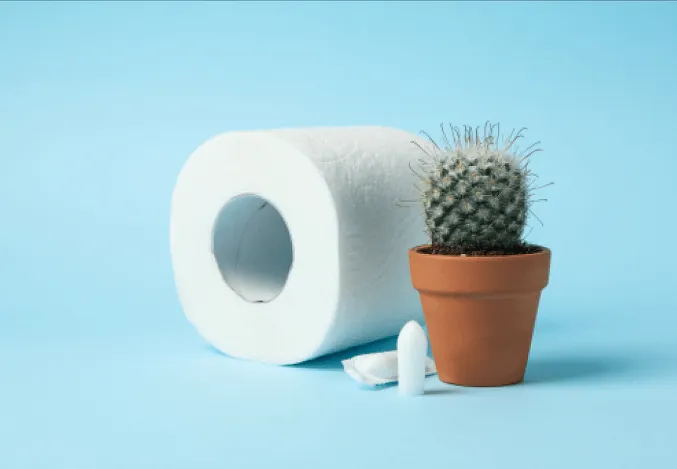Haemorrhoids/Piles Medications Online UK
Your final treatment will be decided by our prescribers based on your medical assessment. You will be asked to select a treatment option from a list after completion of your medical assessment.
What are haemorrhoids?
Haemorrhoids, also known as piles, are a compilation of inflamed veins in the anal canal and lower rectum, consisting of blood vessels, support tissues, muscle, and elastic fibres. They can form inside the rectum, a condition known as internal haemorrhoids or under the skin around the anus called external haemorrhoids. Their sizes can differ. There are four levels of haemorrhoids on a scale from 1-4. Surgery may be required for grades 3 and 4. Internal haemorrhoids are usually found between 2-4 centimetres above the entrance of the anus. They are the most common type of piles. External haemorrhoids typically exist outside the edge of a person's anus. There are treatments available in all forms for the recovery of haemorrhoids. The four grades of haemorrhoids are:
• Grade 1: tiny swollen inflammations, generally inside the lining of the anus. They are not noticeable.
• Grade 2: they are larger than grade one piles. They remain inside the anus. They can be pushed out while passing a stool but can return if not treated.
• Grade 3: they are called prolapsed haemorrhoids and occur outside the anus. A person will feel them hanging outside from their back passage. They can be pushed back.
• Grade 4: they cannot be pushed back and need treatment. These are larger than the other grades.
External piles can be very itchy and annoying. They can form blood clots and block the blood flow in your rectal canal. External piles require immediate medical attention.
What are the causes of haemorrhoids?
Haemorrhoids can develop due to increased pressure on the lower rectum. The blood vessels and veins around a person's anus can stretch and get swollen. That can be due to:
- Straining during bowel movements
- Obesity
- Prolonged sitting on the toilet
- Chronic diarrhoea and constipation
- Pregnancy
- Anal intercourse
- A low fibre diet
- Heavy exercise
The tendency of getting haemorrhoids can be inherited, and the chances of getting piles increase with age. For the diagnosis of piles, the doctor usually carries out a physical exam. They will assess the anus of the person to look for suspected haemorrhoids. For internal haemorrhoids, the doctor may order a digital rectal examination (DRE) or use a proctoscope. It is a hollow tube fitted with a light. This device allows them to see and evaluate the anal canal more closely. A small tissue sample of the rectum can be taken for lab analysis.
A doctor can also order a colonoscopy for a thorough examination of other diseases that might be existing in the rectum and causing the piles.
What are the common symptoms of haemorrhoids?
A person with haemorrhoids may experience the following signs and symptoms:
- A hard, painful lump can be felt around a person's anus. It may contain blood clots. Piles that contain blood are known as thrombosed external haemorrhoids.
- After the passage of a stool, the feeling of still full bowels can be felt
- Severe pain while passing a stool
- Itchy, sore, and swollen area around the anus
- Bright red visible blood after a bowel movement
Some severe symptoms that are an indication for seeing a doctor include:
- Excessive anal bleeding
- Infection
- The inability to control your bowel movements
- Blood clots forming in your piles due to the lack of blood flow
- Unbearable pain
Risk factors include age and pregnancy. With age, tissues that support the vessels and veins around and inside your rectum and anus can stretch and weaken. The baby's weight during pregnancy can put pressure around the anal region that may lead to a case of piles.
If you or anyone you know is experiencing these symptoms, it is advised to visit a doctor and get a proper check-up for haemorrhoids.
How can haemorrhoids be treated?
Usually, haemorrhoids resolve on their own, and there is no need for an elaborate treatment to reduce the symptoms. However, some treatments can help with the itching and discomfort that comes along with piles.
Lifestyle changes
Some lifestyle changes for the recovery of piles include a change in the diet, more specifically, increasing your fibre intake that can help keep the stools regular and soft. Eating fresh fruits, along with vegetables, can help you feel better. Straining during bowel movements causes piles that can be remedied by a good diet. Avoiding caffeine and increasing your water intake is key to a good diet.
Exercising and ensuring you are at your ideal weight can help reduce the stringency of piles. These are the initial steps to treatment for haemorrhoids.
Medications
Some medicines are available to help reduce the symptoms of piles and help with recovery. Over-the-counter painkillers, ointments, creams, and pads can help soothe the pain and redness caused by the piles. They cannot cure the haemorrhoids completely, but they can be effective in reducing the symptoms and making them more manageable. More than prescribed use of these medications can result in further irritation and thinning of the skin. Corticosteroids can reduce pain and inflammation. Laxatives can help pass the stool more easily and make them less painful.
Surgery
Most people do not require surgery when they suffer from piles, however some severe rare cases end up needing surgery. The methods of surgery include:
- Banding: an elastic band is placed around the pile's core, resulting in a complete cut-off of blood supply that causes haemorrhoids to fall off in a couple of days. Grades 1-3 piles can be treated with this method.
- Sclerotherapy: a medicine, such as zinc chloride or quinine, is administered to make the pile diminish. It is an alternative to banding, and it is very effective for grade 2 and 3 haemorrhoids.
- Infrared coagulation: a device is used to burn the pile tissue in this method. It can be used to treat grade 1 and 2 haemorrhoids.
- Haemorrhoidectomy: excess tissue that may be causing the bleeding is cut off in this technique. It involves the use of various sedatives such as local anaesthetics, a spinal and a general anaesthetic. The complete removal of piles is done by this surgery. Difficulty in passing stools and urine can be experienced after the surgery.
Haemorrhoids can be painful and troublesome, which may cause complication, which might induce any further pain and disturbance. Grades 1 and 2 of piles are completely self-manageable. Grades 3 and 4 are severe that include larger piles that most likely need medical assistance. Do not refrain from visiting a doctor if you experience severe symptoms. Conditions like anal fistula can become serious.
Can I buy haemorrhoid treatment online?
Yes! You can quickly and discreetly buy haemorrhoid treatment online through our website.
How long does it take to treat haemorrhoids?
Mild cases of piles usually resolve on their own in a couple of days, but if the issue is too severe with proper treatment and medication, it can be properly healed in a couple of weeks. It is an entirely treatable condition; however, it can be painful and annoying, but you can get rid of haemorrhoids soon with patience.
Patient information leaflet
Always read your patient information leaflet before starting your treatment.
Related Haemorrhoids/Piles Treatments advice & articles
How to order
Order your Haemorrhoids/Piles Treatments medication in a few clicks. Ordering from us is easy, fast and discreet.
Free Online Assessment
Answer a few simple questions about your health.
Choose Your Medication
Our prescribers will review and guide you to the right treatment.
Fast Delivery
Once approved, your treatment is dispatched discreet packaging by next day delivery.

